
Meeting the passengers of the Gloucester through research
There are a myriad of questions still to be answered about the Gloucester frigate, not least what artefacts from its last, fateful journey in 1682 remain amongst the wreckage on the seabed, which was discovered by divers Julian and Lincoln Barnwell and Tiny Little in 2007.
But, closely linked to that, comes the bigger issue of just exactly who was on board the ship on that tragic voyage.
It's estimated that between 130 and 250 people, both crew and passengers, lost their lives on the morning of 6 May 1682.
Yet with no muster list of the names of those on board having ever been found, researchers at UEA are slowly piecing together a fuller picture of who may have joined the future King James II and VII on his voyage – and acknowledge that an exact number of lives lost will likely never be known.

Spectacles found in the wreck © Norfolk Museums Service, Norfolk Historic Shipwrecks Ltd
Spectacles found in the wreck © Norfolk Museums Service, Norfolk Historic Shipwrecks Ltd
“It's needles in haystacks, really,” says Claire Jowitt, Professor of Renaissance Studies and Historical Lead on the project.
“Suggestive shards might pop up in a 19th-Century antiquarian history of Norfolk or in an 18th-Century history of the navy, and then you start thinking, ‘Oh, hello!’.”
There are a number of contemporary eyewitness accounts of the sinking, she continues, which have helped historians work out what happened on the morning of 6 May, “but until now it's largely been a footnote in history”.
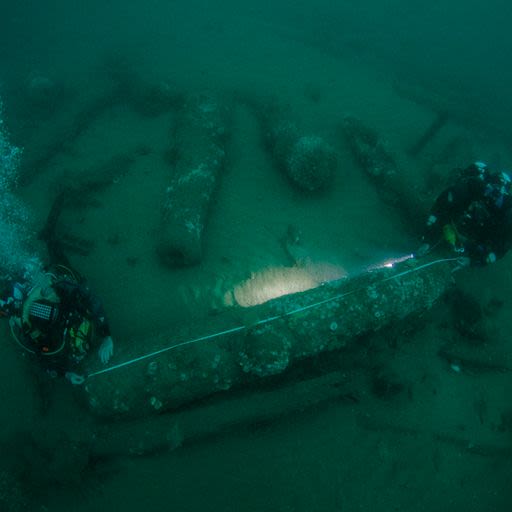
Julian and Lincoln Barnwell measure one of the Gloucester's cannons © Norfolk Shipwrecks Ltd
Julian and Lincoln Barnwell measure one of the Gloucester's cannons © Norfolk Shipwrecks Ltd
“But obviously, the finding of the wreck site does mean identifying the individuals on board becomes more important,” she says.
So, while the story of James, Duke of York and Albany, is well-known, what do we know of the others?
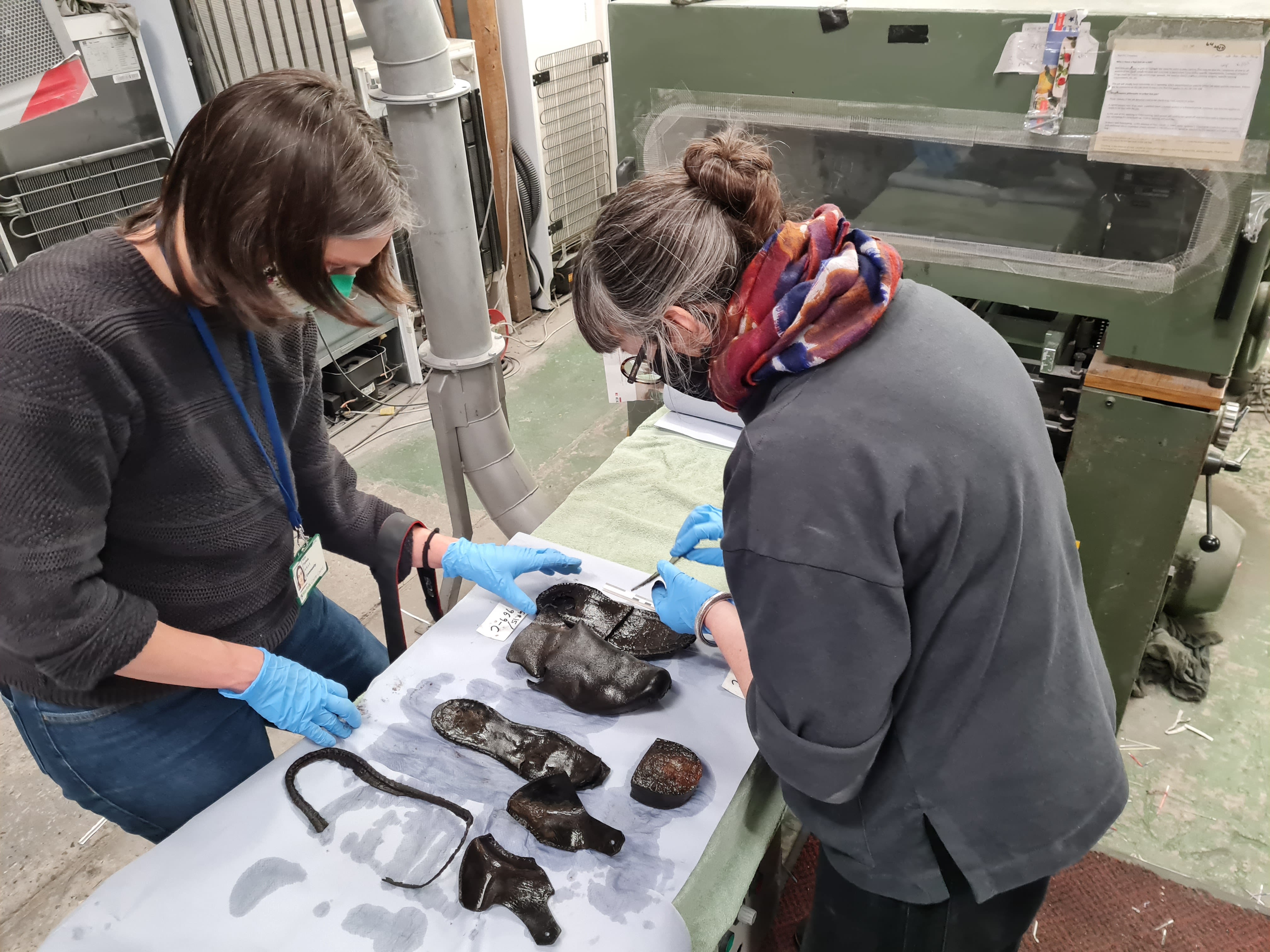
Ruth Battersby Tooke and conservators at Norfolk Museums Service undertaking documentation on leather shoes prior to conservation © Norfolk Museums Service
Ruth Battersby Tooke and conservators at Norfolk Museums Service undertaking documentation on leather shoes prior to conservation © Norfolk Museums Service
Richard Hill
“The person that we think alerts everybody sleeping on the Gloucester to the fact that they've hit the sandbanks is a man called Richard Leake, the Master Gunner of England,” Prof Jowitt explains.
""He’s in charge of supplying cannon and explosives for the nation, an important position, normally appointed for life, serving as the principal technical expert in all aspects of artillery.
"Travelling with him is his son John, who was married the year before to a woman called Christian Hill. Her father, Richard Hill, is the master gunner for the Gloucester, a role that gave him executive command of the ship's guns. We’re interested to know more about his background as some sources call him 'Captain' Hill.
“And it turns out that Hill’s story is notable. He's known as a fantastic swimmer. But when he abandons ship and ends up in the sea about 45km from Great Yarmouth, he attaches himself to a grating and floats to shore on it. Although he reaches land alive, he's so badly bruised that he later dies. Commentators of the time suggest that because he's known as such a good swimmer, he could have swum to shore.”
Hill was from Great Yarmouth, Prof Jowitt explains, and both of his daughters married important figures in the navy. We know that his daughter Christian was painted by Mary Beale, the famous 17th-century portrait artist, and that in the wake of the Gloucester wreck, provisions were made to take care of the family by the Duke of York.
“The records show that Hill's wife Mary receives a pension of £66, a considerable sum of money at the time, for the death of her husband. James is concerned to help support the widows and the children of the crew who died.”
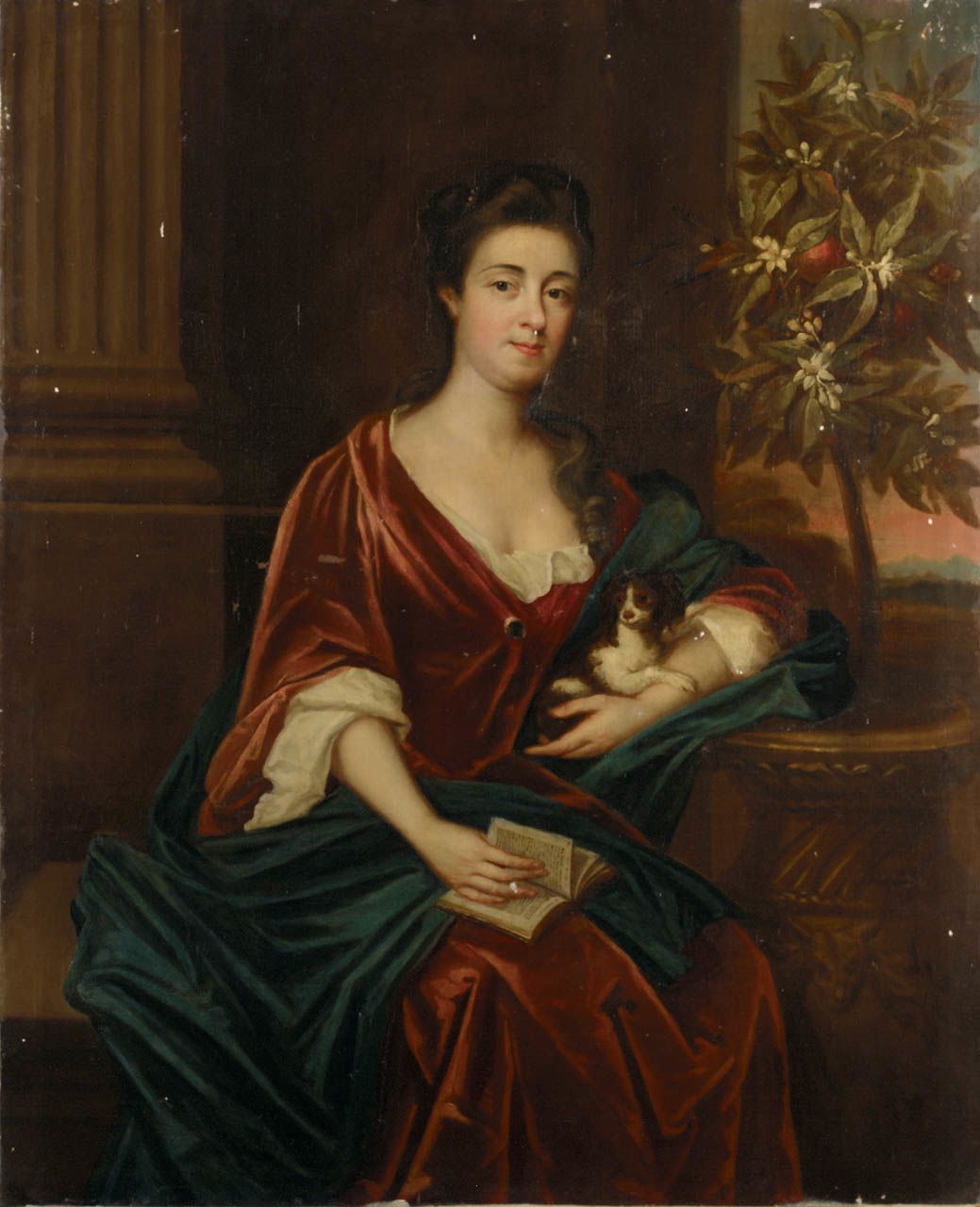
Lady Leake by Mary Beale © National Maritime Museum, Greenwich, London
Lady Leake by Mary Beale © National Maritime Museum, Greenwich, London
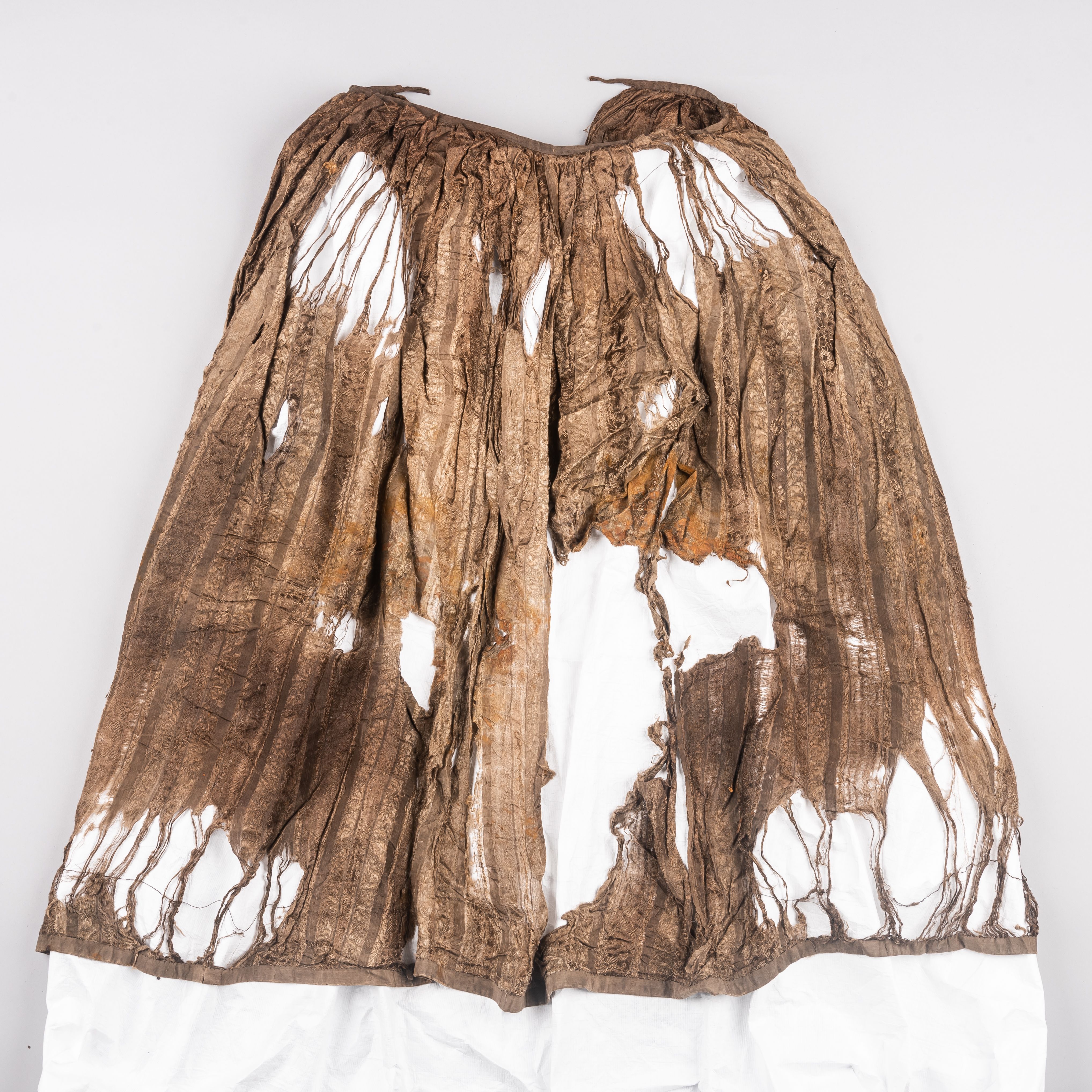
Silk petticoat with damask of flowers and foliage © Norfolk Museums Service, Norfolk Historic Shipwrecks Ltd
Silk petticoat with damask of flowers and foliage © Norfolk Museums Service, Norfolk Historic Shipwrecks Ltd
The mysterious ‘English lady’
The sinking of the Gloucester was, understandably, a major news event at the time, Prof Jowitt explains.
“This is a serious issue as it involved the heir to the throne,” she says. “If James had died, Britain's history would have been profoundly different. So, a number of newspapers of the day publish accounts of the disaster because this is a cause célèbre and national talking point.”
And one of the newssheets, entitled A Letter From Scotland, says that there was an "English lady" who drowned, she explains. The wording here is key, as the term “lady” rather than “woman”, implies “a more elite status, probably part of the nobility”.
But researchers have little else to go on about the identity of this “lady”, and can only speculate if she was a daughter, sister, wife, or perhaps mistress of someone on board – and the gossipy tone may well have been hinting at the latter, in a nod to the future king’s reputation as a libertine.
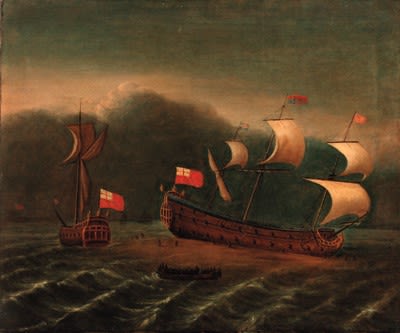
The Gloucester aground on the Lemon and Ower Sandbank, off Great Yarmouth, with H.R.H. James, Duke of York aboard, 6th May 1682, by Isaac Sailmaker © Wikimedia Commons
The Gloucester aground on the Lemon and Ower Sandbank, off Great Yarmouth, with H.R.H. James, Duke of York aboard, 6th May 1682, by Isaac Sailmaker © Wikimedia Commons
“James and his brother Charles are notorious for their mistresses, and for the number of illegitimate children they father,” Prof Jowitt continues. So is this account implying something salacious?
"We have no other information that locates a mistress on board, just that one reference. To date no records of elite women travelling on the Gloucester have been discovered, though there will probably have been some female servants on board.”

An assemblage of items recovered from chests on the Gloucester © Norfolk Museums Service, Norfolk Historic Shipwrecks Ltd
An assemblage of items recovered from chests on the Gloucester © Norfolk Museums Service, Norfolk Historic Shipwrecks Ltd
Thomas Greeting
We know that several musicians went down with the Gloucester, but little detail of some of their lives is known. That’s not the case for Thomas Greeting, however, a member of the king’s private music who drowned that morning.
“It's quite a sad story because he clearly has lots of potential to rise in influence in the Stuart court,” explains Dr Benjamin Redding, Senior Research Associate and maritime historian at UEA. “He's employed on the Gloucester to play the violin, it would seem, although musicians at this time could often perform different instruments.”
And, in fact, Greeting was actually far more famous as an expert in the flageolet, a smaller version of the recorder that had six finger holes, having four finger holes on the front and two thumb holes on the back.
“The flageolet was perceived as an instrument that could be taught to novice musicians and Greeting was an expert tutor,” Dr Redding continues. "He published a volume called The Pleasant Companion, a highly popular beginner's guide on how to play the flageolet.”
Greeting was so renowned, Dr Redding explains, that the diarist Samuel Pepys and his wife Elizabeth were taught to play the flageolet by him.
“Greeting was quite a famous man at the time. After his death, his son Edward Greeting becomes part of James II’s private music instead and continues to serve the monarchy for some years after.”
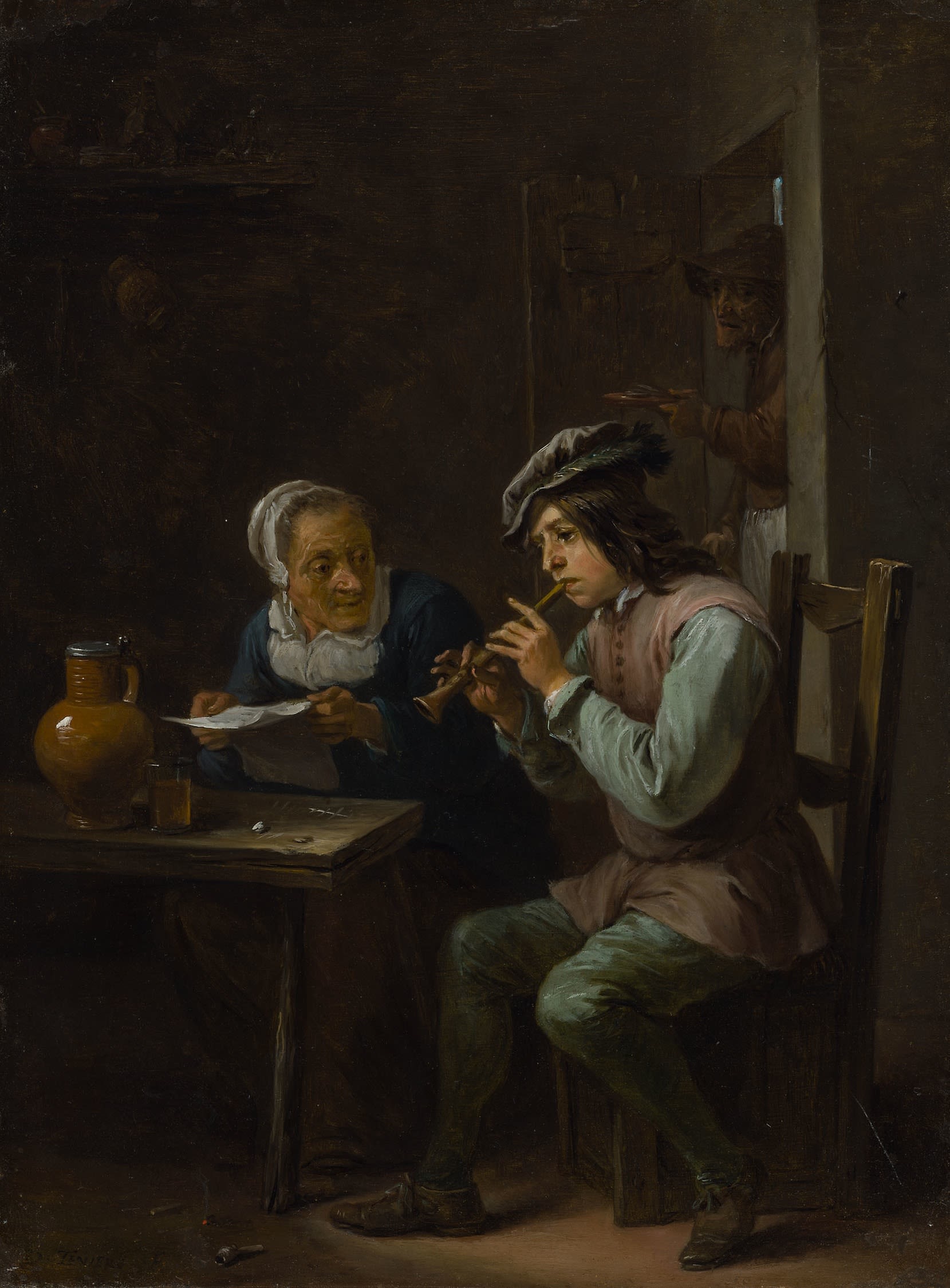
The Flageolet Player, by David Teniers, the younger © Wikimedia Commons
The Flageolet Player, by David Teniers, the younger © Wikimedia Commons

Portrait of Samuel Pepys, by Sir Godfrey Kneller © Wikimedia Commons
Portrait of Samuel Pepys, by Sir Godfrey Kneller © Wikimedia Commons
The owners of Chests A and B
Two chests have been recovered from the wreck so far, offering remarkable collections of artefacts. Their owners remain unknown, but, Prof Jowitt explains, we can make inferences about their lives from what was left behind, preserved for hundreds of years under the water.
Chest A
“Chest A was discovered lidless in 2015, and the standout item it contained was a textile bundle, " Prof Jowitt says. "It looked like a pile of mud and slime, but when it started to be unwrapped and examined, the sheer number of artefacts that were there was amazing."
In the trunk was a wine bottle, leather book covers, a pottery jug, a leather pouch, and spectacles in a case, as well as clothing wrapped around a pair of delicate leather shoes. This bundle included petticoats, a hood and a collar, all made of silk, some of which has, remarkably, even retained the pattern.
“Though silk, the clothes are not of the latest fashion, and they are used; it also seems like they were maybe being repurposed or remade on the journey, as the trunk contains pins and other items for sewing.”
And the leather pouch is particularly significant, Prof Jowitt continues, as it has several royal stamps impressed on it, and so was likely used by one of James’s servants, perhaps for promissory notes or documents, although the identity of the owner may never be confirmed.
Nonetheless, the contents offer a rare and invaluable opportunity to examine surviving clothing from this period, she adds.
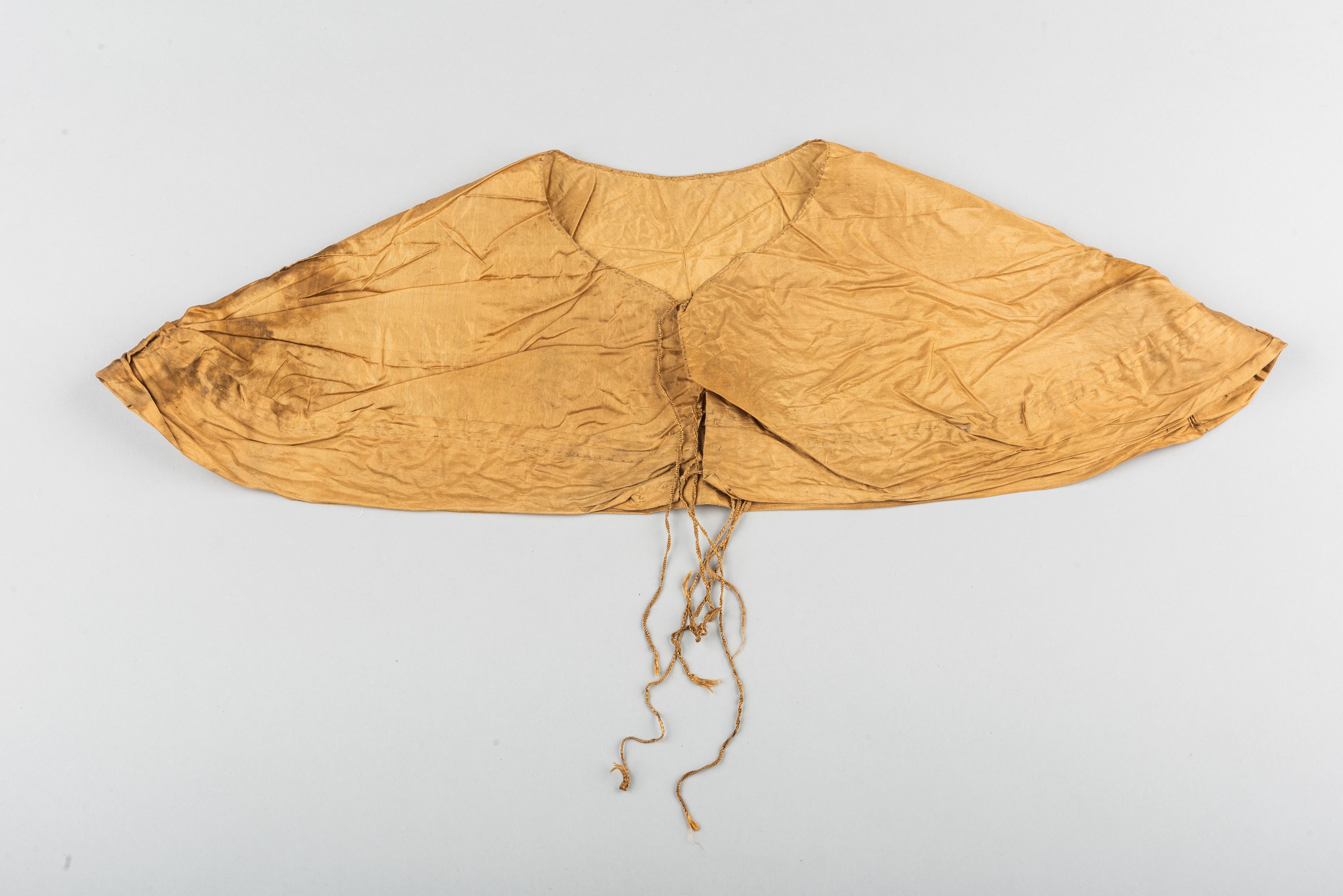
A silk collar from the wreck © Norfolk Museums Service, Norfolk Historic Shipwrecks Ltd
A silk collar from the wreck © Norfolk Museums Service, Norfolk Historic Shipwrecks Ltd
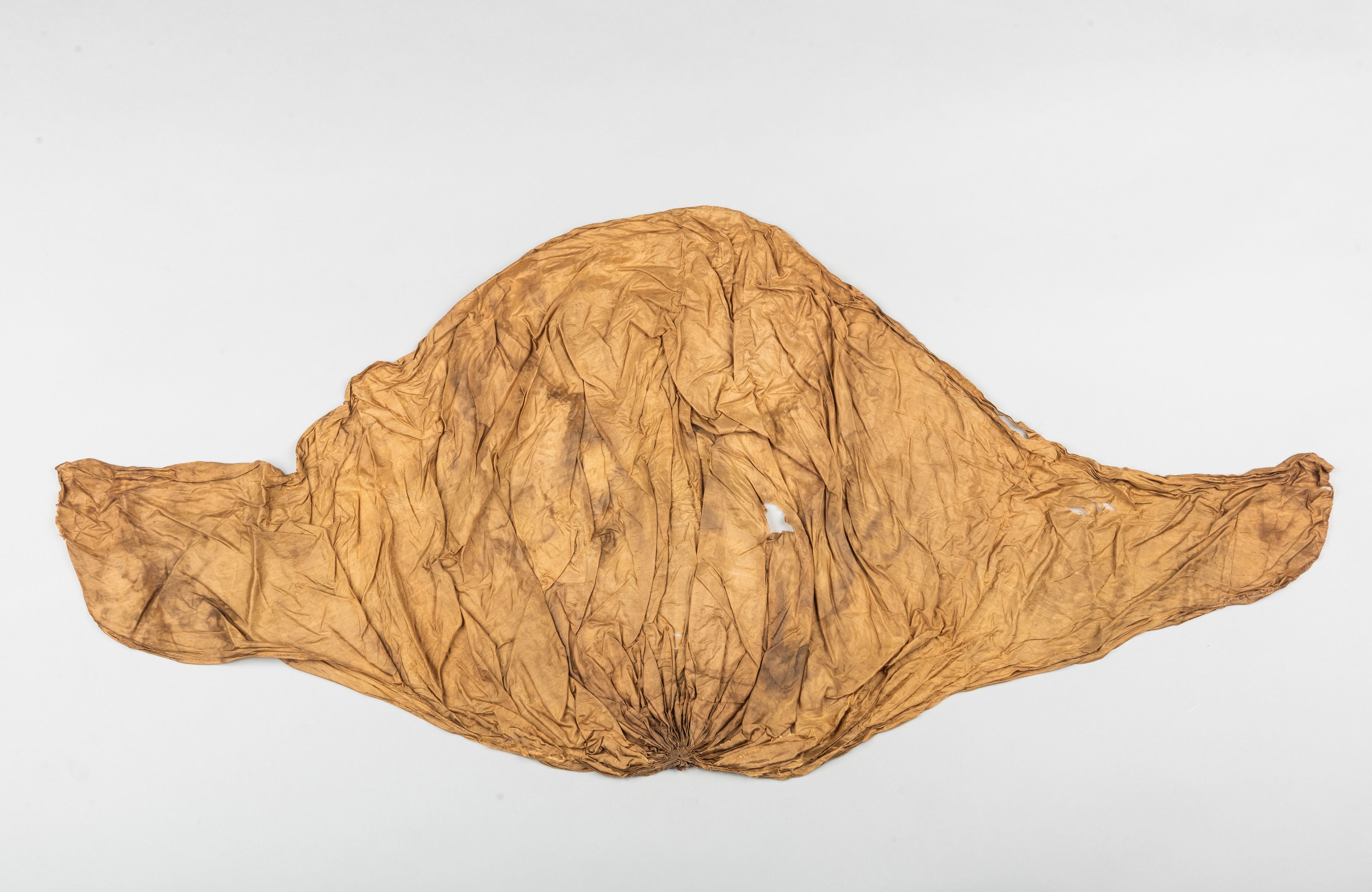
A silk hood © Norfolk Museums Service, Norfolk Historic Shipwrecks Ltd
A silk hood © Norfolk Museums Service, Norfolk Historic Shipwrecks Ltd
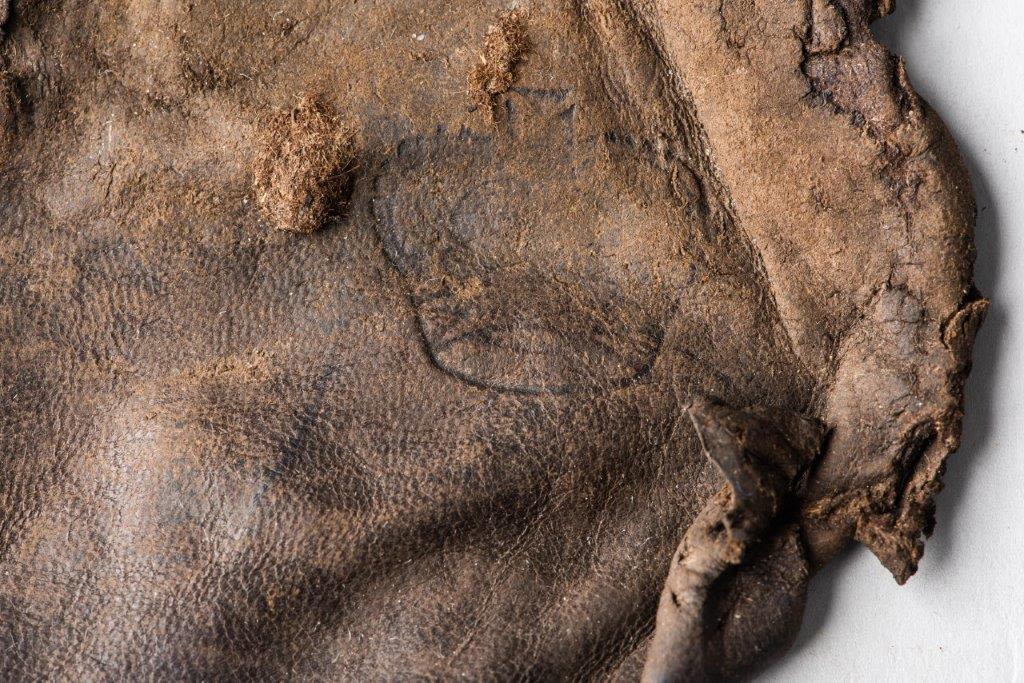
Crown symbol detail on leather pouch © Norfolk Museums Service, Norfolk Historic Shipwrecks Ltd
Crown symbol detail on leather pouch © Norfolk Museums Service, Norfolk Historic Shipwrecks Ltd
Chest B
And what can we ascertain about the owner of Chest B?
“It’s definitely got different characteristics, perhaps indicating a male owner,” Prof Jowitt explains.
“It contained men’s shoes, combs, bottles, books, and buckles. It also has what we call a pacing stick, these are those ceremonial sticks that you often see in pictures of naval captains or other elite gentlemen. They're not walking canes, they are to show authority, so this might belong to a naval officer or rich passenger.
“Overall, it's not a trunk that necessarily suggests nobility, but it does suggest some wealth and it also includes navigation dividers, which indicates someone who is interested in seamanship.”
Explore more:
- The Gloucester: The sinking of a party boat
- Visit the exhibition: The Last Voyage of the Gloucester: Norfolk’s Royal Shipwreck, 1682
- The background of The Gloucester
- The Last Voyage of the Gloucester (1682): The Politics of a Royal Shipwreck (journal article)
_ Uncovering the Gloucester shipwreck (YouTube)

Men's shoes © Norfolk Museums Service, Norfolk Historic Shipwrecks Ltd
Men's shoes © Norfolk Museums Service, Norfolk Historic Shipwrecks Ltd
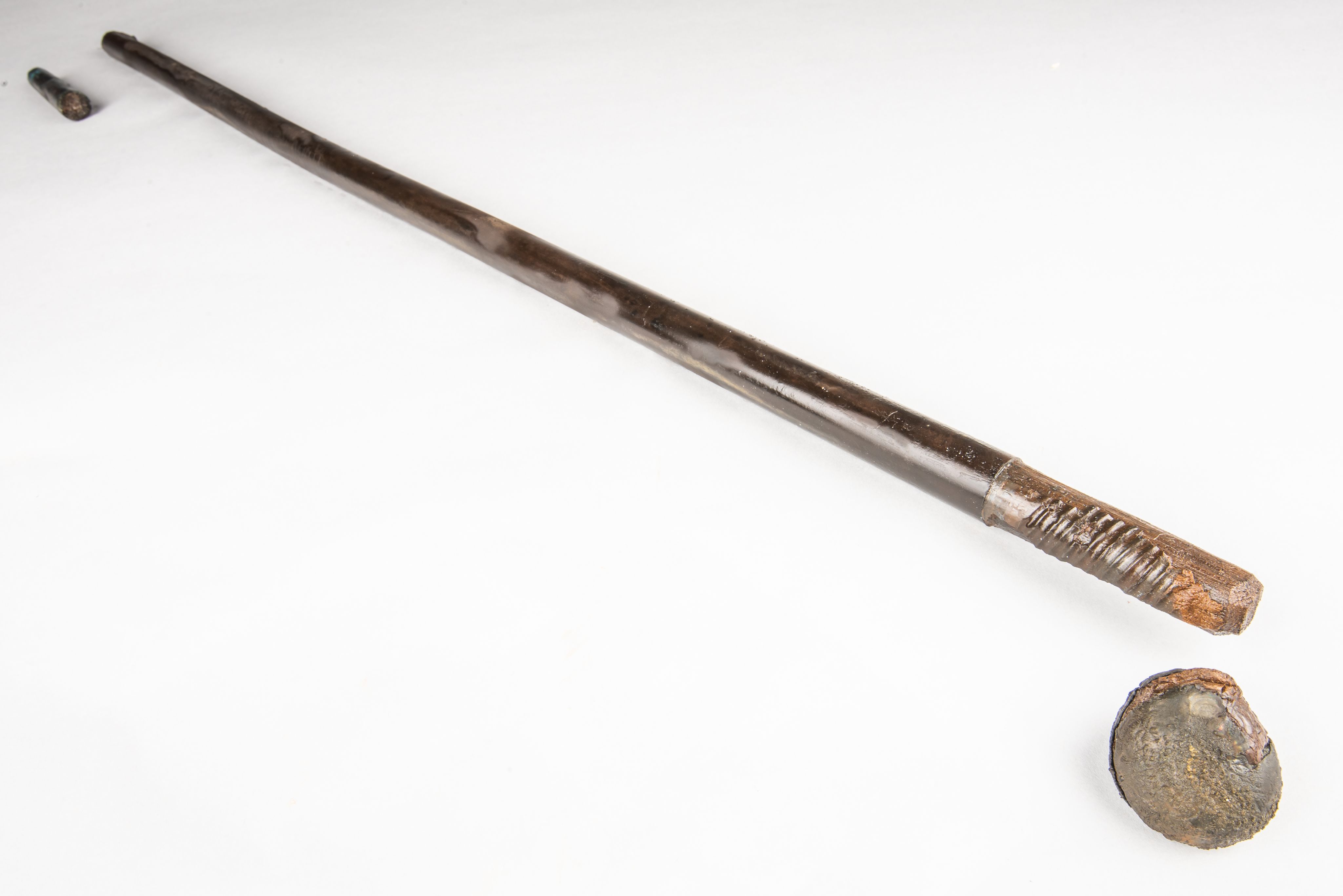
Pace stick © Norfolk Museums Service, Norfolk Historic Shipwrecks Ltd
Pace stick © Norfolk Museums Service, Norfolk Historic Shipwrecks Ltd
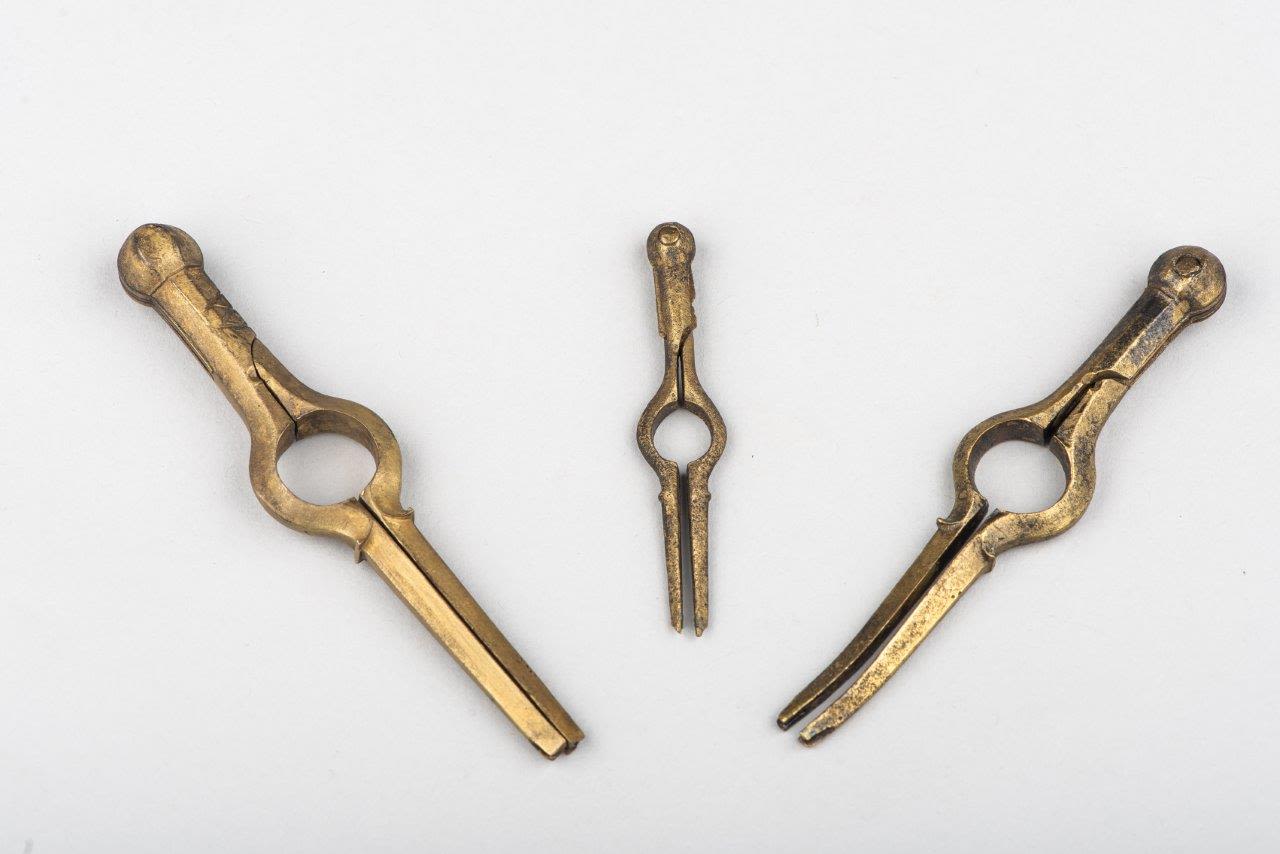
Ship's dividers © Norfolk Museums Service, Norfolk Historic Shipwrecks Ltd
Ship's dividers © Norfolk Museums Service, Norfolk Historic Shipwrecks Ltd
